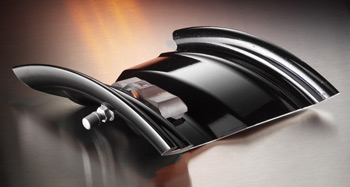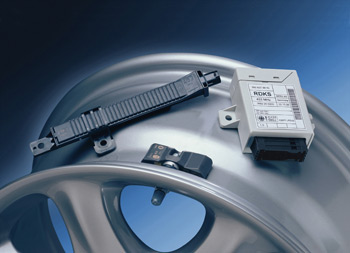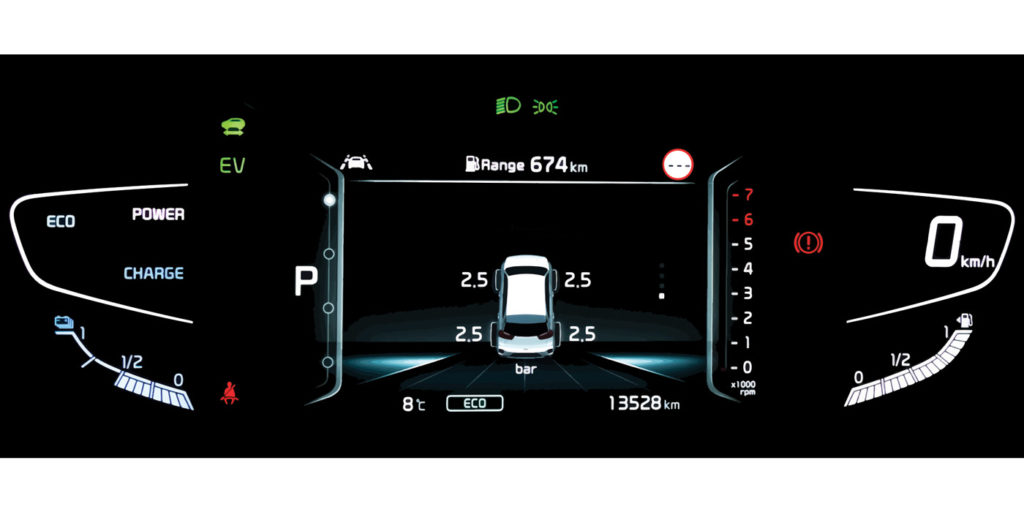TPMS is here, and technicians are learning to deal with it. And, they’re dealing with learning how to troubleshoot TPMS for our customers, who at this point know virtually nothing about it.
The early version of TPMS — the indirect system — was first used on 1999 to 2003 model year OE applications. There were TPMS trial applications dating back to the late 1980s, but they clearly needed more work. OEMs abandoned those early systems in favor of the more reliable indirect system, and, ultimately, the direct systems that are most prevalent today.
Because you are likely still servicing both systems, we’ll start with the indirect system, since there are so many vehicles out there equipped with this version. First, it’s an ABS-based system. If a tire loses air, the diameter of the tire shrinks slightly, causing it to rotate at a slightly faster rate than the other three tires.
But, on most applications, a tire has to lose anywhere from 8 to 14 pounds of air pressure before there’s enough of a difference in overall diameter to be detected by the wheel speed sensors. This depends on the type of tire, the tire’s diameter, aspect ratios and the sensitivity of the ABS system. They sure didn’t make it easy to troubleshoot, did they?
Low-profile tires with short, stiff sidewalls change diameter less than tires with tall aspect ratios that have more compliant sidewalls. Consequently, a loss of 10 psi in a low-profile tire may change the diameter of the tire only less than 1 mm (0.040 inches). Most ABS-based systems cannot detect changes smaller than 1 mm. For this reason, indirect ABS-based TPMS systems are not as sensitive as the newer direct systems, which have a pressure sensor inside each wheel.
ABS-based systems must also re-learn the rotational “signature” of each tire when tires are replaced, repaired, rotated or re-inflated. This requires the driver to push a reset button on the dash or follow a menu on the driver information display. It’s also essential that the tires all be properly inflated before the recalibration procedure takes place. Otherwise, the module won’t recalibrate correctly and may not detect a low tire in the future.
On vehicles equipped with indirect systems, remember to reset the system if the tires have been replaced or rotated. If there is a fault in the system, it will usually be in a wheel sensor circuit (bad wiring, loose or corroded connector, or a faulty sensor). This may also disable the ABS system as well as the TPMS. In other words, you need to check many parts of the system. The good news is that there are plenty of new scanning systems (for about $500) that will tell you what you need to know.
Like the indirect TPMS systems, direct TPMS systems also have their own technical issues. One is battery life. The pressure sensor inside each wheel contains a small battery to power the sensor/transponder. Most are long-life lithium batteries that may last from five to 10 years.
Eventually, though, the batteries go dead. On Corvette or Cadillac applications, the battery can’t be replaced separately, so the sensor/transponder must be replaced as a unit. If a battery has died, it’s probably a good idea to replace all the TPMS transponders if the vehicle is more than six years old.
On Corvette and Cadillac applications — and many others, as well — each transponder is coded to a particular wheel. The pressure sensor operates only at speeds above 20 mph, and only transmits once per hour when the vehicle is parked to extend the life of the battery. If the pressure drops below 24 psi or rises above 39 psi, it will trigger a message to display on the driver information center.
TROUBLESHOOTING TIPS
For each 10° F drop in ambient temperature, the tire can lose around 1 psi, depending on where you live. The reverse is true in hot climate zones. The tire will gain air pressure. Sometimes heating and cooling can amount to 50 psi over the course of a full seasonal year. That will turn the dash light on from time to time. Just remember this: cold weather will reduce the air pressure, warm weather will increase the air pressure; so it is important to recheck tire pressure every time the weather changes dramatically, and at the very least seasonally.
That’s another reason for you to check your customers’ inflation pressure all the way around. You don’t want “check tire pressure” warning lights glowing all over town. Remember also that sunlight heats up tires even if the vehicle isn’t being driven. You will find that one side of the vehicle will be warmer than the other, because the sunlight will work its way around the vehicle during the course of a few hours. Your solution here is to check the inflation pressure often to avoid not only over- or under-inflated tires, but for sensitive TPMS systems as well. Never eyeball pressure; always use an accurate gauge.
On most applications, the transponders in each wheel must be reset if they are rotated to another position on the vehicle. This can often be done by placing a J-41760 magnet over the valve stem or by using a Tech 2 or equivalent scan tool.
The magnet method works this way: With the key on but engine off, press both lock and unlock buttons on the key fob. A horn chirp within 10 seconds indicates the TPMS receiver is in the programming mode. Place the magnet over the left front valve stem until the horn chirps again. This forces the left front sensor to transmit its code to the main module.
Repeat the same procedure for the right front, right rear and left rear sensors in this order. Then, verify that all four pressure-readings are displayed correctly on the driver information center.
Finally, there is the scan tool method. If no sensors are being replaced, you can use your scan tool to reprogram the new wheel locations. Just follow the menu prompts when you come to “TPMS Reprogramming Procedure.”
Here’s another quick tip: drivers should not use any old tire sealer with direct TPMS systems. Tell them that if they have a flat tire on a TPMS-equipped vehicle, they should only consider using a TPMS-friendly tire sealant/inflator. These products are designed to not gum up the TPMS sensors inside the wheel and prevent them from reading normally. Some sealant/inflator products even have a warning label stating they should not be used in wheels that contain TPMS sensors. You don’t want to deal with that, and your customers will thank you.













